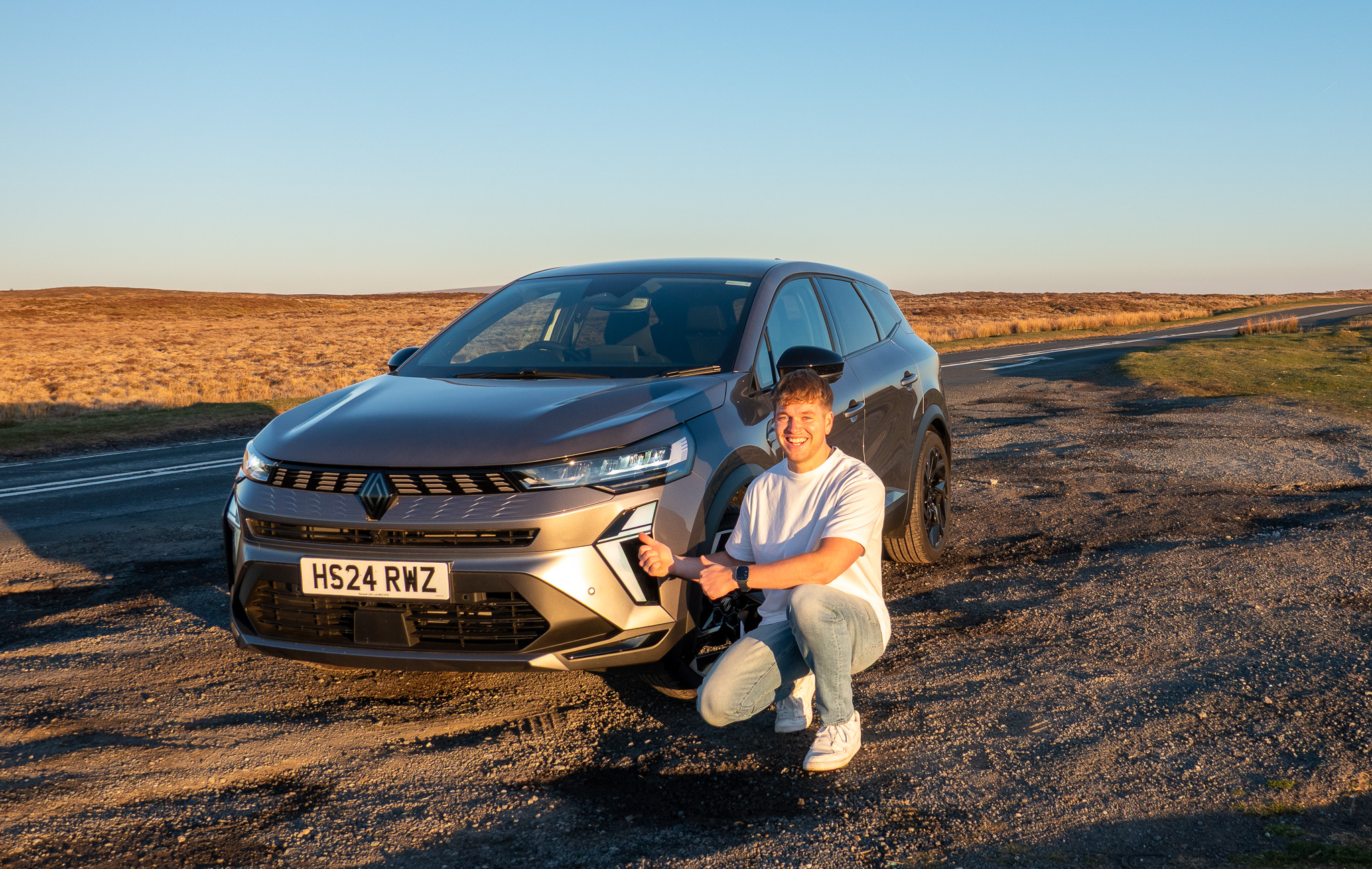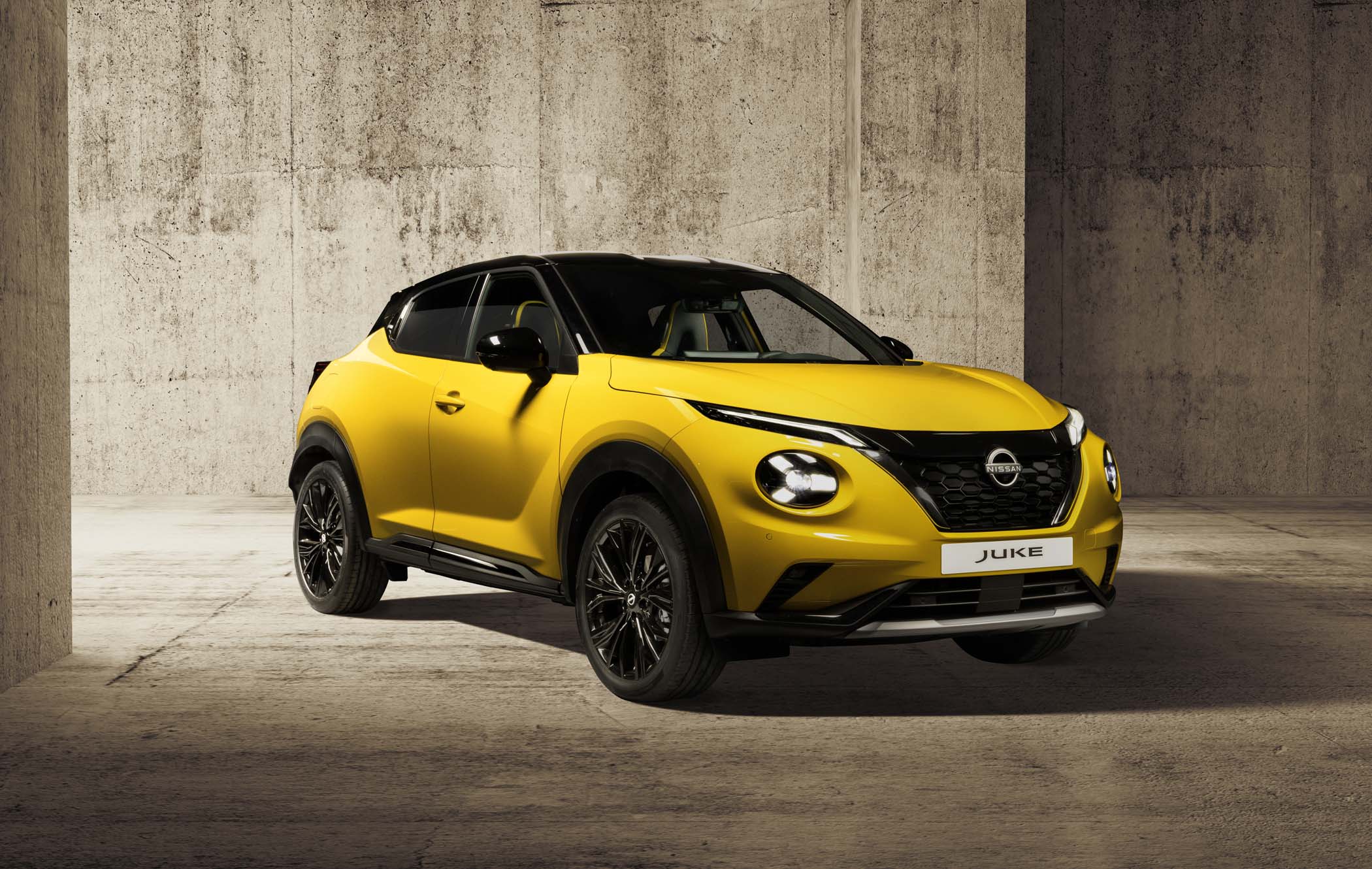Renault Symbioz review
Packed with thoughtful interior features and bucket loads of boot space, the Renault Symbioz sounds like the perfect family car, but does the hybrid powertrain live up to expectations, or could it be just that little bit better? Read our full Renault Symbioz review to find out.

Pros
- Intuitive Google-powered infotainment system
- Generous standard equipment
- Huge boot
Cons
- Rivals have higher safety ratings
- Rear legroom is compromised
- Only one engine option
Interior
Our rating: 7/10
Driving position
Despite its relatively compact dimensions, the Renault Symbioz isn’t short on big-car comforts, including plenty of adjustability in the driver’s seat, particularly on the height settings.
The passenger seat also has height adjustments, which many other compact crossovers don’t offer, so kudos to Renault for thinking of your co-driver, too.
In fact, the whole seating position works very well, with plenty of reach and rake movement in the steering wheel and well-aligned pedals with enough space for your left foot, which is redundant in all versions of the Symbioz, because you can only get an automatic hybrid powertrain (more on that below).
Tech and features
The cabin is a very familiar place for anyone who’s been in a modern Renault from about 2019, with the portrait touchscreen sitting proudly on the dashboard.
Where it differs from earlier systems, such as the one we’ve lived with in the Zoe, is that the operating system has been entirely rewritten, so it’s both better to look at and better to use.
It’s a 10.4-inch unit running an Android-based system, so it’s instantly recognisable to anyone who owns a smartphone, and it includes all of those neat Google features like Google Maps and the Google voice assistant.
If you prefer a more phone-like experience, you can also choose to use Android Auto or Apple CarPlay to sync music, messages and more from your phone.
The range-topping iconic esprit Alpine trim level adds a Harman/Kardon sound system, and while it’s a welcome upgrade over the standard stereo system, it didn’t blow us away.
Other useful tech includes a 360-degree parking camera on iconic esprit Alpine cars and heated front seats on mid-range techno esprit Alpine models, but every version of the Symbioz has a 10.25-inch customisable digital instrument cluster.
All cars also include a convenient wireless phone charger, adaptive cruise control, all-round parking sensors and full keyless entry and start.
The ‘Solarbay’ panoramic sunroof fitted to top-spec models welcomes a good amount of light into the cabin, and it uses a clever system to opacify the glass when you want to block out sunlight instead of using a traditional roller blind.
Performance
Our rating: 5/10
Engines and power
Unlike many of the Symbioz’s rivals, you don’t unlock more powerful engines as you step up the trim levels – the ‘full hybrid E-Tech 145’ powertrain is the only option you get.
It pairs a 95hp 1.6-litre petrol engine with two separate electric motors – 52hp and 24hp – to assist the engine at different speeds.
Peak power, as the name suggests, is 145hp. Acceleration feels brisk around town where the electric motors provide a noticeable boost, but the Symbioz does start to lose its puff as you’re trying to build up speed quickly on a slip road, where the engine starts to show its coarser notes.
We didn’t find the gearbox overly intuitive, either, with it often selecting a lower gear than we’d have gone for. In a similar vein, the engine also seemed to be reluctant to shut down under light throttle load, but more on that in the fuel economy section below.
Shoehorning this hybrid system into a relatively compact SUV also pushes the price up – it’s a shame the 1.0-litre turbocharged petrol engine we see in the Clio isn’t offered as a cheaper option.
Handling and ride comfort
This is a strong point of the Symbioz, unless you’re after spirited driving, because the suspension has been tuned for comfort while maintaining a good amount of control.
The car feels solid and refined on poorly surfaced roads, but not back-breakingly so.
You’ll also notice how light yet responsive the steering is, but we think the Symbioz could do with a slightly smaller steering wheel just to give it a more engaging feel.
Around town, the Symbioz is pretty quiet inside, but hit the faster roads and the tyre noise becomes more apparent.
Practicality
Our rating: 8/10
Boot space
Chances are, if you’re in the market for a crossover or small SUV, then you want the added practicality to make family life easier.
Many small SUVs don’t actually deliver any more practicality than regular family hatchbacks, but the Symbioz really stands out for its huge amount of storage.
Renault claims up to 624 litres of boot space, which is more than most large family SUVs offer. There is a catch, though – to get all that space, you’ll need to slide the rear bench all the way forwards, and it slides as one, so rear-seat legroom takes a big hit.
Still, most of the time you’re unlikely to be carrying a car full of passengers, and having this amount of flexibility is deeply impressive.
In its smallest form, the boot measures 492 litres, which is still a lot of space for a crossover, so that’s a big tick in the box for Renault.
Rear seats
With the seats in their rearmost setting, legroom for adults is acceptable, but slide them forwards even by an inch and you might start rubbing up against the front seatbacks.
It’s worth noting that, despite the fact the rear bench slides as one, you still get 60:40 split folding rear seats, so you can extend access to the boot while still having someone sitting in the back.
Storage solutions
Headline figures for the Symbioz include precisely 24.7 litres of in-car storage, comprising a seven-litre glovebox and plenty of room in the door bins and centre armrest.
There are also numerous storage trays on the dash to keep things like phones and wallets – when we sent the Symbioz back after living with it for a week, we had to check these numerous times simply because they were so useful to store stuff in.
Towing
Officially, the Symbioz can tow a 750kg braked trailer, but that’s only good enough for a small trailer, so if you’re after an SUV that can tow a caravan or similar, consider a different model.
Safety
“Up to 24 advanced driver assistance systems,” Renault proudly proclaims in its brochure for the Symbioz. They include blind spot monitoring, lane keep assist, active driver assist and even a predictive hybrid driving system, which is meant to maximise fuel efficiency by taking into account hills and traffic.
The four-star Euro NCAP rating is acceptable, but some rivals like the Toyota C-HR and Nissan Juke do have higher five-star ratings, so we’d like to see future iterations of the Symbioz improve this rating.
Running costs
Our rating: 7/10
Fuel economy
Renault claims a staggering 61.4mpg from the Symbioz’s twin-motor self-charging hybrid powertrain, and with some very careful driving mostly around town and country lane speeds, we were able to achieve this.
After a week and nearly 300 miles under our belt, including more motorway driving, our long-term average dipped to around 50mpg.
However, the hybrid system’s distinct reluctance to use the electric motor to drive the wheels was detrimental to fuel economy, and mostly uncharacteristic of other hybrids we've driven. Given the bold claims of situational awareness for the hybrid system, we’d like to see better real-world figures.
50mpg might be solid for a self-charging hybrid, but Peugeot’s mild hybrid system used with its 1.2-litre petrol engine offers similar MPG figures and performance for less money. It uses a 0.9kWh battery (compared with the Symbioz’s 1.2kWh unit), offering similar electric-only driving characteristics.
Reliability
Although the Symbioz itself is a new model, the platform and mechanical parts it uses are shared with other Renault models, and even some Nissans, so we can be sure that everything is tried and tested.
Insurance groups
Affordability is the name of the game here, and the Symbioz sits in insurance groups 16 and 17, which means you’re unlikely to end up spending any more on insurance than if you’d bought a small family hatchback.
The verdict
Interior
7/10
Performance
5/10
Practicality
8/10
Running costs
7/10
On the whole, the Renault Symbioz is a strong entry into the small SUV segment with a spacious, flexible layout and generous tech, even on entry-level models.
While the hybrid powertrain delivers a smooth ride around town, it struggles a bit under load and doesn’t always maximise electric driving potential, meaning real-world fuel economy might not be as high as you’d hope.
Still, the Symbioz offers good value, smart features and family-friendly versatility that all make it stand out in what is one of the most congested areas of the market – crossovers.


